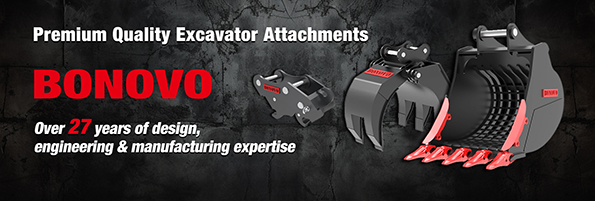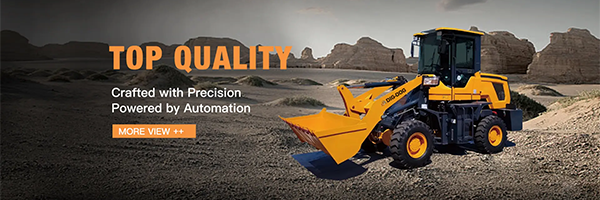1. Through theoretical study and forklift performance, structural characteristics and precautions, have a clear understanding, familiar with the position and function of each joystick and instrument.
2. Check tire pressure according to regulations, remove stones and objects embedded between tire treads.
3. Check whether the water in the water tank is full, the oil level scale of the engine oil, the oil storage in the fuel tank, and whether there is leakage in each oil pipe joint and water pipe joint.
4. Check whether the free travel of the clutch pedal is normal.
5. Check whether the pedal works normally.
6. Check whether there is air in the fuel supply pipeline. If there is air, it should be removed according to the standard.
7. Check the electrical system for poor contact and short circuit.
8. Check whether the headlights, small lights, rear lights, brake lights, turn signals and horns are working properly.
9. Check whether the fasteners are loose.
2. Start the engine
1. Put the speed lever in the middle (neutral) position, put the handbrake in the braking state, insert the starter switch key, turn it clockwise to the "preheat" position, stay for 5 seconds, and then turn it to the "start" position. At the same time, gently step on the accelerator pedal and the clutch pedal. The starting time should not exceed 10 seconds. Once started, you should immediately release the key and the key will automatically reset. If the engine cannot start at once, you should wait for 1-2 minutes and then restart it.
2. When the temperature is below 5°C, if it is difficult to start, you can use the preheating system. When starting, turn the starter switch key to the "preheat" position, stay for 45-60 seconds, and then turn it to the "start" position to start. If it still does not start, you should wait for 2 minutes and return the switch to the "preheat" position and repeat the above process.
3. Inspection and preparation before driving
1. After the engine is started, it should be turned for about 5 minutes, and the engine water temperature should rise to above 50°C and the engine oil temperature should rise to above 40°C before it can work with load.
2. When idling, check whether the readings of each instrument (water temperature gauge, oil pressure gauge, ammeter, fuel gauge) meet the requirements. If not, stop the car immediately for inspection and eliminate the problem.
3. Before driving, the braking (hand brake and foot brake) system should be carefully checked. It must be sensitive and reliable, otherwise it should be adjusted.
4. Precautions when driving
1. When starting, use a slow gear. After starting, test whether the brake and steering work well.
2. When changing speed during driving, the clutch should be disengaged first, and then the shift handle should be operated.
3. When switching back and forth, the forklift should be completely stopped before proceeding.
4. When going down a steep slope, you should use a slow gear and step on the foot brake pedal intermittently. When running uphill, you must also switch to a "slow" gear in time.
5. When turning, you should slow down in advance, and when turning sharply, you should switch to a "slow" gear first.
6. It is not allowed to separate the clutch and slide, and it is not allowed to put your foot on the clutch plate while driving. In addition, when stepping on the clutch, the separation should be quick and the engagement should be smooth.
V. Safety principles and precautions during loading and unloading operations
1. You must have a driver's license to drive a forklift, and the driver shall be assessed according to JT5029-91 standards.
2. The driver should pay attention to his own safety before the engine is started, and should ensure the safety of the transportation.
3. Do not use it in a flammable and explosive environment.
4. Do not open the radiator cap when the engine is overheated.
5. The maximum load of the fork at the specified load center shall not exceed the rated lifting capacity.
6. Adjust the distance between the forks according to the size of the goods so that the weight of the goods is evenly distributed between the two forks.
7. When the fork is inserted into the cargo pile, the fork frame should be tilted forward. After the goods are loaded into the fork, the fork frame should be tilted backward so that the goods are close to the fork wall before driving.
8. When lifting the fork, it should generally be done in a vertical position.
9. When loading and unloading, the hand brake must be used to stabilize the forklift. And it is absolutely forbidden to have people under the fork frame. At the same time, it is not allowed to lift people on the fork.
10. When driving with cargo, the fork frame should be tilted backward and the fork should be about 300 mm from the ground. Under normal circumstances, violent braking and sharp turns are not allowed during operation.
11. The opening size of the slide valve in the multi-way valve controls the lifting speed of the fork frame. When the goods start to lift and lower, the initial speed should not be too fast.
12. When the fork frame tilts forward and backward to the limit position or rises to the maximum height, the handle must be quickly manipulated to the middle static position. When manipulating one handle, be careful not to move the other handle.
13. When moving goods, the goods block the driver's line of sight, and the forklift should reverse and drive at a low speed.
14. When loading and unloading goods, braking is not allowed at a large slope. At the same time, "fast" speed is not allowed; if necessary, reverse driving or pressing the goods.
15. The fork must not be used to pry up buried objects. If necessary, the prying force must be calculated first.
VI. Shelf stacking operation training, according to the fifth lesson standard operation.
VII. Precautions after parking
1. Tighten the handbrake lever and put the shift handle in the "empty" speed gear.
2. Before the engine is turned off, it should be idle for 2-3 minutes.
3. In a severely cold environment, when antifreeze is not added to the water tank, the cooling water should be drained. And move the battery into the warm room.
4. Clean the dirt inside and outside the vehicle, and check whether the fasteners of each part are loose or leaking.
5. When the forklift stops for a long time, it should be lifted up and suspended, the cooling water should be drained, and the battery electrode column should be disassembled. If it is stored for more than one year, the air filter should be wrapped, the hydraulic oil should be drained, and the surface of the parts that are prone to rust should be coated with anti-rust oil.
6. When the forklift is transported to other places, it should not be used for long-distance self-transportation. It should be transported by railway vehicles or cars.
VIII. Daily maintenance work content
1. Clean the dirt, mud and dust on the forklift. The key parts are: fork frame and mast slide, engine and starter, battery electrode column, water tank, air filter.
2. Check the tightness of each part, focusing on: fork frame support, lifting chain connection nut, wheel bolts, half-axle bolts, brake, steering gear bolts.
3. Check the reliability and flexibility of the clutch, foot brake, and steering gear.
4. Check for leakage, with emphasis on: pipe joints, diesel tank, hydraulic oil tank, brake pump, lifting cylinder, tilting cylinder, water tank, water pump, engine oil pan, transmission, drive axle, reducer, full hydraulic steering gear, steering cylinder.
5. Remove the sediment from the oil filter.
IX. First-level technical maintenance
Perform according to the "daily maintenance" items and add the following work;
1. Check the cylinder pressure or vacuum.
2. Check and adjust the valve clearance.
3. Check whether the thermostat is working properly.
4. Check whether the multi-way reversing valve, lifting cylinder, tilting cylinder, steering cylinder and gear pump are working properly.
5. Check whether the gear shifting of the transmission is working properly.
6. Check and adjust the clearance between the brake pads and brake drums of the hand and foot brakes.
7. Replace the oil in the oil pan, check whether the crankcase ventilation pipe is in good condition, and clean the oil filter and diesel filter element.
8. Check whether the engine and starter are installed firmly, whether the wire connectors are clean and firm, and whether the carbon brushes and rectifier rotors are worn.
9. Check the tightness of the fan belt.
10. Check whether the wheels are installed firmly, whether the tire pressure meets the requirements, and remove the debris embedded in the tread.
11. If the parts are disassembled for maintenance work, the forklift road test should be carried out after reassembly. The specific contents are as follows:
(1) Braking performance under different degrees should be free of deviation and snaking: on a steep slope, the vehicle should stop immediately after the handbrake is tightened;
(2) Listen to the engine running under acceleration, deceleration, heavy load or no load to see if there are any abnormal sounds;
(3) After a certain mileage of road test, check whether the brake drum, transmission, rear axle housing, gear pump, etc. are overheated;
(4) Check whether the lifting speed of the fork frame is normal and whether there is any shaking.
Nine knowledge points of forklift operating skills
- DIG-DOG
- Counselor
- Posts: 645
- Joined: Oct 20th, '24, 22:38
- Location: China
Nine knowledge points of forklift operating skills
Choose DIG-DOG for high-quality, customizable brush cutters for skid steers with fast delivery. Contact us today to discover how our superior products can enhance your land management tasks!
for more info just visit our website at WWW.DIG-DOG.COM
contact # : +86 158 6218 2088
email : sales@bonovogroup.com
for more info just visit our website at WWW.DIG-DOG.COM
contact # : +86 158 6218 2088
email : sales@bonovogroup.com

